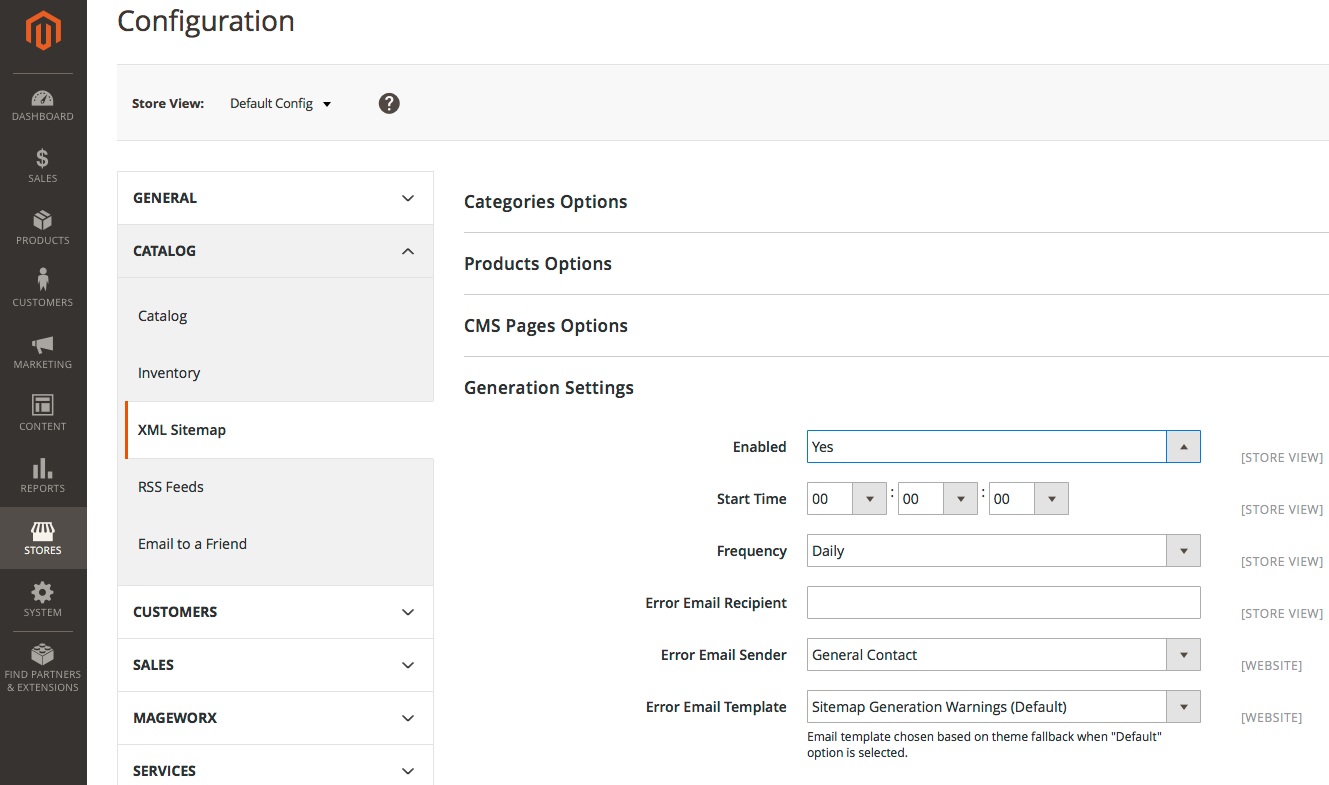
- MAGENTO 2 SYSTEM XML DEVDOCS UPDATE
- MAGENTO 2 SYSTEM XML DEVDOCS MANUAL
- MAGENTO 2 SYSTEM XML DEVDOCS SOFTWARE
Magento provides tools like API logging and error reporting to help you debug the issues. Test and Debug: Test the integration and debug any issues that you encounter during the integration process. The response may be in XML or JSON format depending on the endpoint and the request.

Handle API Responses: Handle the responses returned by the API. You can use different HTTP methods like GET, POST, PUT, and DELETE for different types of requests.
MAGENTO 2 SYSTEM XML DEVDOCS UPDATE
Use API Requests: Use the API requests to fetch or update the data from the Magento store. Choose the endpoint that matches the type of request you want to make. Generate API Credentials: Once you have created the integration, generate the API credentials that will be used to access the resources through the API.Ĭhoose an API Endpoint: Magento provides different API endpoints for different types of API requests. Select the resources that you want to access through the API and set the permissions. To use Magento API for integration, follow these steps:Įnable Magento API: In the Magento admin panel, go to System > Integrations and create a new integration. It provides a more efficient and flexible way to query data from Magento and is designed to support modern application development practices. GraphQL API: This is a relatively new API that was introduced in Magento 2.3.It uses the XML format for data exchange and provides more functionality compared to REST API. SOAP API (Simple Object Access Protocol): This is a legacy API that is used for backward compatibility.REST API uses standard HTTP methods such as GET, POST, PUT, and DELETE to interact with Magento. REST API (Representational State Transfer): This is the most commonly used API that allows communication between Magento and third-party applications.Competitive advantage: Businesses can create customized solutions that meet their specific needs, giving them a competitive advantage in their respective markets.Additionally, businesses can avoid the need to build custom solutions from scratch, which can be expensive and time-consuming.
MAGENTO 2 SYSTEM XML DEVDOCS MANUAL


MAGENTO 2 SYSTEM XML DEVDOCS SOFTWARE
It provides a standardized way for developers to exchange data and integrate Magento with other software solutions, such as CRMs, ERPs, accounting systems, and other e-commerce platforms. Magento API (Application Programming Interface) is a set of protocols, routines, and tools that enable communication between Magento e-commerce platforms and external systems or applications. In this blog, we will explore the benefits of integrating Magento API with third-party applications and the best practices to follow. This integration enables businesses to automate their processes, reduce manual effort, and improve their overall efficiency. Magento API provides a solution by allowing businesses to integrate their Magento store with other applications, including CRMs, ERPs, and marketing automation tools, to name a few. With the increasing demand for e-commerce, businesses require a more streamlined approach to managing their online stores. In this blog, we will be discussing the integration of Magento API with third-party applications.


 0 kommentar(er)
0 kommentar(er)
